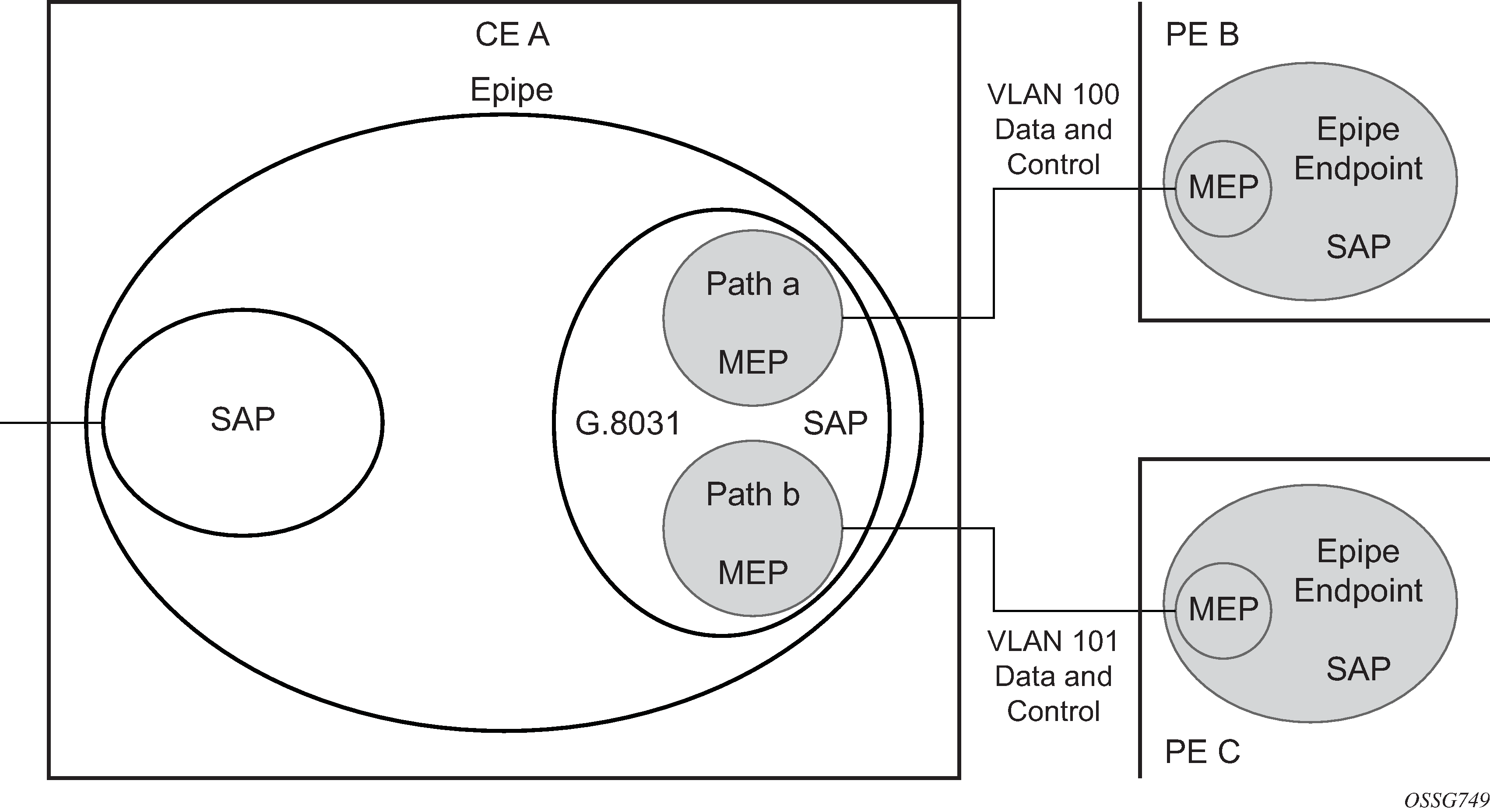G.8031 offers a number of redundant configurations. Normally, it offers the ability to control two independent paths for 1:1 protection. In the BGP-MH site support for Ethernet tunnels case, BGP drives G.8031 as a slave service. In this case, the provider edge operates using only standard 802.1ag MEPs with CCM to monitor the paths. Figure: G.8031 for slave operation shows an Epipe service on a Customer Edge (CE) device that uses G.8031 with two paths and two MEPs. The paths can use a single VLAN of dot1q or QinQ encapsulation.

In a single-service deployment, the control (CFM) and data share the same port and VID. For multiple services for scaling, fate sharing is allowed between multiple SAPs, but all SAPs within a group must be on the same physical port.
To get fate sharing for multiple services with this feature, a dedicated G.8031 CE-based service (one VLAN) is connected to a Epipe SAP on a PE, which uses BGP-MH and operational groups to control other G.8031 tunnels. This dedicated G.8031 service still has data control capabilities, but the data Epipe service is not bearing user data packets. On the CE, this G.8031 is only used for group control. Making this a dedicated control (CFM) for a set of G.8031 tunnels is to simplify operation and allow individual disabling of services. Using a dedicated G.8031 service to both control and to carry data traffic is allowed.
Fate sharing from the PE side is achieved using BGP and operational groups. G.8031 Epipe services can be configured on the CE as regular non-fate shared G.8031 services, but because of the configuration on the PE side, these Ethernet tunnels are treated as a group following the one designated control service. The G.8031 control logic on the CE is a slave to the BGP-MH control.
On the CE, G.8031 allows independent configuration of VIDs on each path. On the PE, the Epipe or endpoint that connects to the G.8031 service must have a SAP with the corresponding VID. If the G.8031 service has a Maintenance End Point (MEP) for that VID, the SAP should be configured with a MEP. The MEPs on the paths on the CE signal standard interface status TLV (ifStatusTLV), No Fault (Up), and Fault (Down). The MEPs on the PE (Epipe or endpoint) also use signaling of ifStatusTLV No Fault (Up), and Fault (Down) to control the G.8031 SAP. However, in the 7750 SR, 7450 ESS, and 7950 XRS model, fate shared Ethernet tunnels with no MEP are allowed. In this case, it is up to the CE to manage these CE-based fate shared tunnels.
Interface status signaling (ifStatusTLV) is used to control the G.8031 tunnel from the PE side. Normally the CE signals No Fault (Up) in the path SAP MEP ifStatusTLV before the BGP-MH causes the SAP MEP to become active by signaling No Fault (Up).